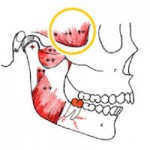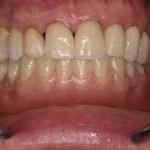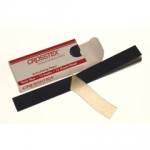Denture occlusion is no different from natural teeth occlusion. Occlusion refers to your bite, to how well and how accurate the teeth come together and how well the top teeth fit into the bottom teeth when you bite together. If you experience pain when you bite down or chew food, your occlusion may be off and need adjustment. You evaluate denture occlusion the same way you evaluate natural teeth occlusion, with dental occlusion paper and a mouth mirror available from your dentist or a dental supply laboratory.
How Malocclusion Can Affect Your Oral Health
There are five main muscles that control your ability to open and close your mouth. Together these muscles can generate tremendous forces when chewing, clenching and grinding your teeth. If a misalignment of the teeth is present, these large forces can be translated from the misaligned teeth as destructive forces to the ligaments and bone that hold the teeth in place, the muscles of the head and neck and the jaw joint.
If left untreated, malocclusion could lead to:
- Chronic headaches
- Temporomandibular joint disorder (TMJ)
- Muscle pain
- Tooth movement
- Tooth loss
- Injuries to the teeth
- Tooth wear
- Tooth sensitivity
If you and your dentist determine that your occlusion is contributing to and/or causing dental problems, a treatment plan may be developed to adjust your occlusion. In order to do this, your dentist will require a full series of intraoral radiographs (X-rays), photographs and impressions of your teeth so that models can be made of how they come together. Your dentist may also want a CT of your tempromandibular joint (TMJ).
Using these materials as a basis for further study, your dentist will determine the best way to modify your teeth to improve your occlusion.
Ways of Thinking About Occlusion
Essentially, dentists approach occlusion in five different ways. Each of these theories about occlusion has merit, and treatments based on each have been successful. The theory your dentist chooses to follow can depend upon a number of factors. These factors may include patient characteristics and type of overall treatment that is being planned, as well as your dentist’s education, training and various other considerations.
- Intercuspal theory: The occlusion or bite is determined by tooth contact.
- Musculoskeletal/centric relation theory: The occlusion or bite is determined by the balance of the jaw muscles and not by how the teeth come together.
- Neuromuscular theory: The occlusion or bite is determined by gravity and based on where the jaw muscles are most relaxed.
- Most posterior retruded position theory: The occlusion or bite is determined by how the ligaments brace the components of the jaw joint, particularly toward the rearmost hinge axis.
- Anterior protrusive position theory: The occlusion or bite is determined by how the muscles brace the components of the jaw joint.
These theories of how a person’s teeth can come together have several aspects in common. First, they share the idea that the upper and lower teeth should fit together evenly, with no one tooth hitting higher than another. Also, when the upper and lower jaws move from side to side, the front teeth should touch and the back teeth should not. What differs among these theories is where the jaw or temporomandibular joint should be positioned during treatment.
How to evaluate occlusion
Things You’ll Need
- Occlusion paper
- Scissors
- Hand mirror
- Mouth mirror
-
Cut a 2-inch piece of paper from the roll of occlusion paper.
- Place the paper into your mouth on the right side.
- Bite down on the paper, and grind your teeth back and forth.
- Remove the occlusion paper from your mouth, and set it aside.
- Look into the hand mirror, and examine your teeth for blue marks on the lower teeth. If any blue marks appear, the denture teeth will need to be adjusted to correct the occlusion problem.
- Place the mouth mirror in your mouth, and look into the hand mirror as you move the mouth mirror to reflect the upper teeth.
- Check for blue marks, indicating that your bite is uneven and the denture teeth need to be properly adjusted.
- Repeat these steps for the left side of your mouth.
Tips & Warnings
- If the occlusion paper indicates your dentures need to be adjusted, it is important to see a dentist as soon as possible.
- After getting your dentures, a series of sequential assessments and adjustments are needed to balance the occlusion and create the best, near perfect bite as possible. Usually the patient will be called for review 2 to 3 times. If the patient is not called for review, but is feeling any discomfort, do not hesitate to contact your dentist.


